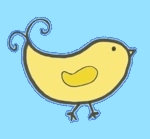

All of our studies are non-invasive. Most of the infant studies use a paradigm called "headturn preference." Infants participating in one of these studies sit on the lap of their caregiver in a sound-proof booth. They listen to different kinds of passages (either language or music), and they are allowed to listen for as long as they look toward the speaker playing the passage. We measure how long they listen to each kind of passage to determine which type they prefer. Using this technique, we attempt to answer two questions: First, what knowledge of their native language do infants have when they visit us in the laboratory? Second, what can infants learn about a new language in a very short time in the laboratory?
We also run a study for 2-6 year-olds. Please read the description below for more information.
In addition to the following studies run by the Tweety Lab, the Tigger Lab has studies for infants and toddlers, ranging from 4.5 months to 5 years. Contact the Tigger Child Cognition Lab for more information.